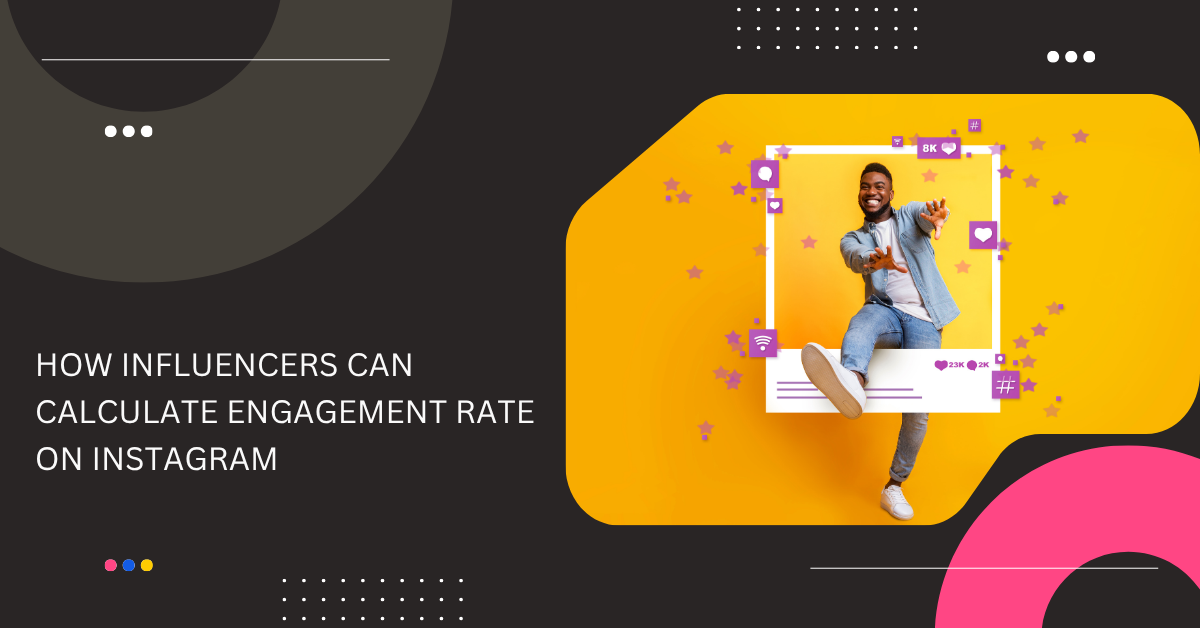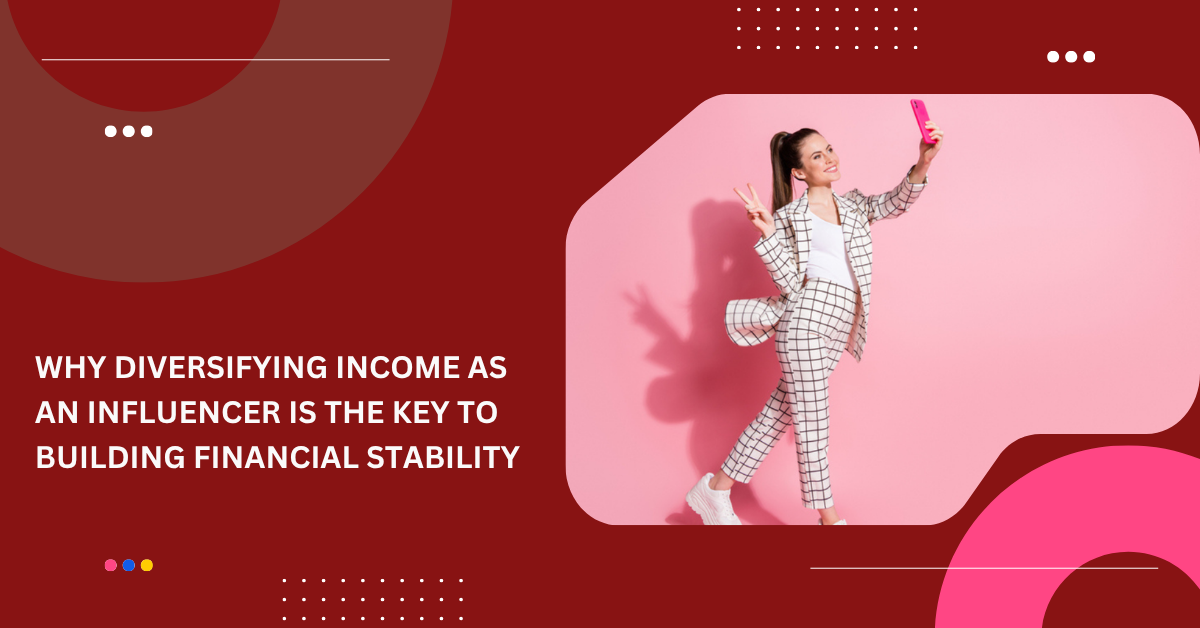A large number of followers is no longer the only deciding factor in the world of influencer marketing. Real audience engagement is the ultimate metric now. As 2025 approaches, it is more important than ever for creators and the talent management agencies that represent them to calculate their Instagram engagement rate. The foundation for proving genuine value is under this metric. This blog will help you understand how to calculate engagement rates and give you the exact information you need to understand your impact and succeed.
Why Engagement Rate Still Matters for Creators and Talent Agencies
For individuals who want to become influencers on Instagram and talent management agencies, engagement rate (ER) is more than “likes per follower”. It’s the bridge between influence and income. Successful brand collaborations are a result of proper attention to ER because it tells them how responsive and active your audience is.
- An account that has 100,000 followers with an engagement rate of 5% can outperform a 1 million follower account with the same absolute engagement, because the smaller audience is more alive.
- For talent management agencies, being able to calculate engagement rate on Instagram becomes a key metric. You can use it to qualify creators for campaigns, justify rates, and predict performance. In 2025, ER has become a non-negotiable metric.
Understanding What Counts as Engagement in 2025
Before calculating, you need clarity on what interactions count. As we discussed above, deciding to calculate engagement on Instagram goes beyond likes and comments. For an agency or creator, there are several interactions that weigh differently. For example, a like is an important engagement metric. But a comment or save often indicates deeper interest than a like. A story reply, again, can be even more valuable. So let’s look at some of the commonly calculated metrics:
- Likes
- Comments
- Saves
- Shares (to stories and DM)
- Profile taps (The number of people who tap on your profile per post)
- Link clicks (The number of people clicking on links provided by you, if any)
- Poll replies, Sticker responses, and Story replies
- Video view metrics for reels and mainly retention. Calculating how many people actually watched till the end can help you curate your content differently and understand what works and doesn’t.
Gathering Data to Calculate Engagement on Instagram
Here are the most used, easy-to-understand formulas. These require simple inputs and won’t lead to complications. Let us look at what formulas influencers can use to calculate engagement rate on Instagram. But before that, let’s see where they can find and gather certain metrics within the Instagram application.
- How To Find Likes, Comments, Saves, and Shares for a Post: Open the Instagram app and go to your profile. Tap the Professional dashboard (to get the professional dashboard option, change your account to a creator/business account, which can be done in the settings). Under Content you shared, tap Posts and choose the post you want. Then tap on View insights. This is where you can see likes, comments, saves, and often shares listed under Interactions. Additionally, you’ll also see reach and impressions.
- How to Find Reach and Impressions: In the same View insights for a post, you will be able to find both reach and impressions. Reach is basically unique accounts that saw the post, and impressions are the total number of times the post was viewed. (including repeat views).
- How to Get Reels and Story Metrics: Go to your profile, then click insights. Under Content You Shared, click reels or stories. (whichever you will need) Click reels and then select a reel. Now you’ll see plays/views, accounts reached, likes, comments, saves, and shares. Similarly, if you click “stories” instead of reels, you’ll see forward and back taps, replies, and link taps. These tell you how interactive or engaging a story was and will help you decide the best time to post on Instagram.
- How to see Audience Demographics and Follower Growth: Go to profile, then click insights. Here, Audience shows follower count, follower growth (new followers), top locations, age ranges, and active times. This can help you with your Engagement rate processes and content creator goals greatly.
Simple Formulas Influencers Can Use to Calculate Engagement in 2025
You don’t have to be a math wiz to know how to calculate engagement on Instagram. You only need the right formulas. Here are the most used, easy-to-understand ones, without any complication.
- Engagement Rate by Followers: This is the first one and is simple and works well for comparing posts and getting a “rough judge,” and for smaller creators where most of your followers see your feed. Use it for pure comparison or pitch decks. Here’s the formula:
ER= (Likes + Comments + Saves + Shares) / Followers × 100
- Engagement Rate by Impressions or Reach: This is often more precise when many people viewing your post aren’t your followers, since Instagram surfaces them to “non-followers”. Use this for sponsored campaigns or when you collaborate with brands, as reach matters there.
- Average Engagement Rate (Across Multiple Posts): Take the ER of your past 10 or more posts and add them up, and divide by the total number of posts. Use this for assessing performance over time. Here’s the formula:
Average ER = (ER(1) + ER(2) + ER(3)) / Total Number of Posts
What is good Engagement in 2025?
Being able to calculate engagement rate on Instagram is not the same as it was years ago. In 2025, it varies according to different aspects. Let’s see what good engagement generally looks like.
- Average ER Decline: In 2025, Instagram’s overall average ER has fallen. This decline reflects on Instagram’s growing content volume, which means there are more posts from more creators competing for users’ attention. As a result, although more content is being shown, users are interacting less enthusiastically on average with each post, due to a crowded Instagram feed.
- The Target for Creators: Top Influencer benchmarks place the target ER for creators around 1%+ as a minimum for being campaign-ready. Reels and short-form often show higher ERs. Hence, as a creator, aiming for anything more than 1% is the best thing to do.
- Short-form Superiority: Websites like Hootsuite and other reports highlight that short-form content like reels often outperform static posts, while images and traditional video may lag. This is why creators are switching almost completely to posting reels on Instagram.
Tips To Improve Instagram Engagement
Here are practical tips that social media content creators and agencies can implement quickly. These may seem simple, but following them consistently can take your account to heights you’ve never witnessed before.
- Hook in The First 2–3 Seconds: Mainly for reels, start with a proper punchline. Instagram’s short-form algorithm favors early retention, and if people swipe away in the first seconds, your distribution and reach will drop. Be sure to select a proper thumbnail as well, as this will help you get more clicks.
- Use Carousels for Storytelling and Saves: Another growing feature is the use of carousels in posts. Create them, if possible, with step-by-step tips, before/after sequences, or listed posts. Always encourage a “save this” quote at the end. Carousels increase on-post time and help in saves. In today’s Instagram world, saves are a strong signal of content value.
- Ask Specific Questions and Get Creative: To drive engagement through comments, some good Instagram influencer tips are to insert small CTAs that invite a one-word or emoji reply: “Which color — A or B? Let me know in the comments!” is an example. Comments weigh more than likes, so get creative and probe your audience with easy questions.
- Always Interact with Your Audience: Any creator who lets their audience go dry without replies will not see higher engagement. Run polls, quizzes, “ask me anything”, and use the features on your stories to engage well. Reply to DMs and story replies as soon as possible. Story interactions are intimate and non-followers into your active audience. Always remember that a response builds trust and signals the algorithm.











